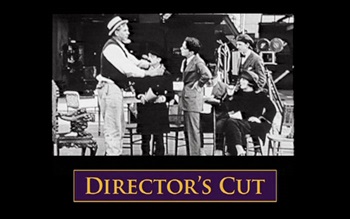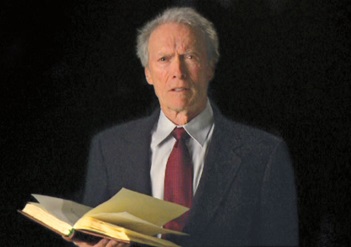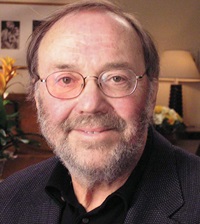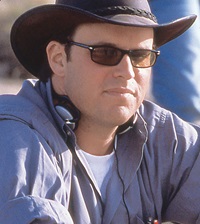Untitled Document
By Rob Feld
For the kickoff of the Guild’s 75th anniversary celebration at the DGA Awards dinner in January 2011, it was only fitting that the history of the Guild and its members be presented on film. But with so many game-changing events—both onscreen and in the Guild itself—the question was how to accomplish this in a compelling and comprehensive way. The Anniversary Committee, led by former DGA President Michael Apted, decided on a two-pronged approach: a short film by Chuck Workman called Director’s Cut to capture the iconic images created by members, and a series of six short films by Michael Stevens called Moments in Time to present the seminal events in Guild history.

Workman was a natural choice. He had created Precious Images for the 50th anniversary of the Guild in 1986, compiling some of the great directorial moments of the DGA’s feature film directors. That film wound up winning the 1987 Oscar for best live action short. And Workman was about to reach out and suggest a reprise for the Guild’s 75th when his phone rang: Apted was calling to suggest the same thing.
“We loved Precious Images and it quickly became a seminal moment in Guild history that lived on long after our 50th anniversary,” says Apted. “For the 75th anniversary, we wanted to recapture that feeling but with the full landscape of the work of our members, not just the directors of feature film. By widening the scope to include television, commercials, news, sports, and documentary, we felt that the montage could truly reflect the diversity of our members’ work. A daunting task, but one Chuck handled brilliantly.”
To start with, Workman compiled a list of some 1,500 titles and then set out to narrow the selections to clips that would honor the work of DGA directors, but also make for a dynamic audience experience.
“It wasn’t necessarily the obvious shots,” notes Workman. “It was where I felt the director was not just serving the script or producer, or doing something flashy; but where the director was really working his art and craft at the top of his game.”

But it wasn’t only creative choices that Workman had to grapple with. It was still unclear whether the Guild could secure rights to the clips he had selected (not to mention the archival footage Stevens would need for his short films). When a team of lawyers reviewed the list, they expressed confidence that they could secure the rights, and the films moved ahead.
With his list of clips trimmed to 325, Workman then set out to find connections to stitch together the footage with still photographs from the DGA archives, and come up with an organizational structure for his film.
“I needed to set up the film to be historical but also be able to digress, while having a good opening and closing,” explains Workman. “All of that was in my head and provided the subtext of the film while I was choosing things like one second of Psycho and Orson Welles talking about the director’s job to end on. There’s a family of directing that all of us in the Guild feel very strongly about. Whether their clip is in the film or not, every single member who has ever lived in the Guild is represented in it, by its spirit and subtext.”
In its just over eight minute running time, Workman managed to include snippets, some of them so fast as to be almost subliminal, of images embedded in our colective consciousness, including Sammy Davis Jr. kissing Archie Bunker in All in the Family (directed by John Rich), Marlon Brando howling for Stella in A Streetcar Named Desire (directed by Elia Kazan), and the spicy meatballs of an Alka-Seltzer commercial (directed by Howard Zieff.)

With the craft of directing in all its forms represented in Workman’s film, it fell upon Stevens to present the story of the Guild itself in a series of six five-to-seven-minute films. Guild President Taylor Hackford says there were many crucial questions that needed to be answered: “How did this Guild grow, develop, and prosper in the face of exceptionally difficult labor conditions born out of the Great Depression? How did a small group of prominent directors force the powerful studios to recognize the nascent Guild and implement our first labor contract? A guild does not just come into being, and since our stories are rather exceptional, what better way to share them than to use our craft to tell them?”
Stevens, who has compiled short films for the Kennedy Center Honors and We Are One: The Obama Inaugural Celebration, among many others, was the ideal person to direct and shepherd these films since as the grandson of former president George Stevens and son of director George Stevens Jr., he had practically grown up on the Guild’s history.
So with the DGA Awards just months away, Stevens was invited to meet with Hackford and Apted. They had the idea to have six directors narrate the key moments in the creation, development, and future of the Guild. The chapters to be covered were the founding of the Guild; recognition by the studios; the blacklist era; the merger of the East and West Coast guilds; creative rights; and future challenges.
It was clear early on that since the Guild was founded by the most prominent directors of its time, enlisting some of today’s most prominent members to narrate would provide the best bridge between the past and present.
“Steven Spielberg, a pioneer himself but also someone who dreams in his films, felt like the right person to start with,” explains Stevens. “Martin Scorsese, the ultimate film historian and also of Italian heritage, telling the Frank Capra component of the story felt organic. Clint Eastwood telling the blacklist story felt connected to me because he is a man of clear integrity and decency. Mel Brooks relating how the East and West Coast guilds came together felt natural to me, as did Francis Ford Coppola discussing creative rights. James Cameron is not only a premiere storyteller but is also consumed by the future of filmmaking, so he was perfect for that final segment. The theme of each of the stories was connected to the personalities and their respective work.”


Relying heavily on vintage photographs, many of them from the DGA archives, especially for the early chapters, Stevens set out to tell the Guild’s history in pictures. With music, editing, and writing, the stories came alive in a dramatic and compelling way.
“I imagined them feeling as if they were all shot from the same roll of film, which is why we used a combination of desaturation, vignetting, and a slight prism lighting effect to bind them all together, to basically harmonize them,” Stevens says of his process. “The goal was to try to ‘see into the past’ in a dynamic, visual way, since moving images, by and large, were not available to us.”
And to put the history of the Guild into context and give it additional resonance—to paint a picture of the time—Stevens drew on historical images from outside Hollywood as well, to make the point that Hollywood is not an island.
“Hollywood’s creativity and ability to connect to audiences is 100 percent tied to the fact that it is part of the bigger world,” says Stevens. “And what was going on in these stories in many ways was emblematic and reflective of the evolution that the country was going through at that time. I felt it was important as members of the Guild that we all see that our story was very much America’s story.”
The indelible images captured by Director’s Cut and Moments in Time will continue to live and tell the DGA story on the Guild’s new website (www.dga.org).